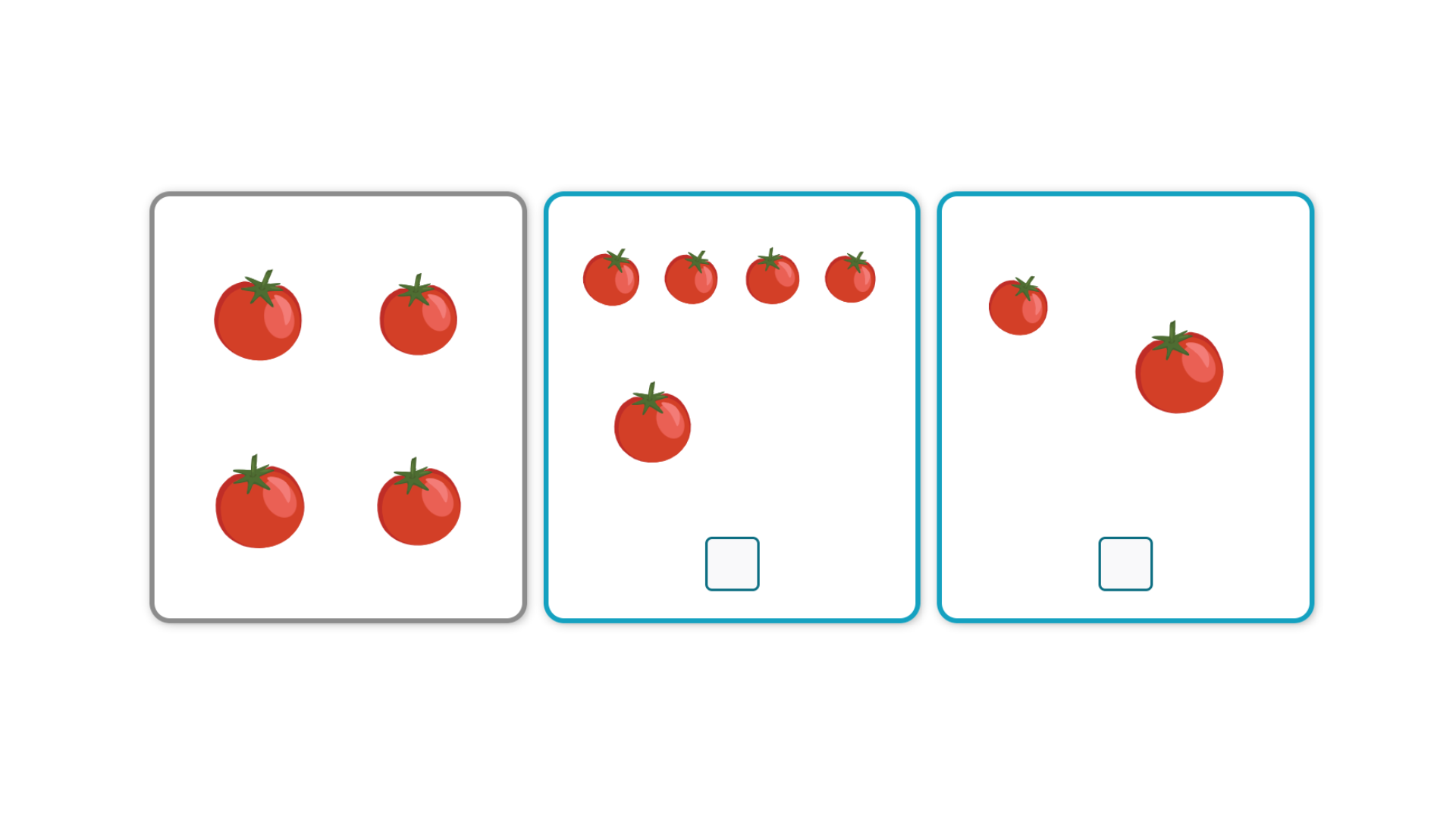Tips on how to use this exercise at home and at school.
Early math concepts
In this exercise, the child is already counting objects, expressing numbers, quantities, comparing them and determining how much bigger or smaller they are.

Why is this exercise important?
The child already understands the principle of comparison (thanks to exercise 123).
Now it is necessary to include numerical expression in the comparison. This means numbers and how we express the comparison. So the child is working with both quantity and numbers, which they are passively comparing with each other.
Who is the exercise suitable for?
In general, it belongs to early school games. In addition to number concepts, and rational assumptions, it also develops language skills with numbers at the same time.
Methodological recommendations
Either read aloud the instructions to the child, play them from the app or let the child read them by themselves.
The child is shown two or three groups of pictures and is instructed to decide where there are more or fewer objects and by how much. He or she has to figure out the number of objects in the initial group, compare the number of objects in the remaining two, and decide how to match the numbers and the correct picture according to the instructions.
The exercise allows to turn on in the instruction setup only for differentiation: more, less or random and the number range 0-5; 0-10; 0-20.
Tips for similar activities outside the app
We can compare using dice. You and the child roll the dice and compare: Who got the same number of points, more or less, and by how much?
More ideas for comparison activities:
Who got the same, more, less candy and by how much?
Who stands higher or lower on the stairs and by how much?
Whose building blocks are higher or lower and by how much?
Who used the same, more, or fewer cubes for their building and by how much?